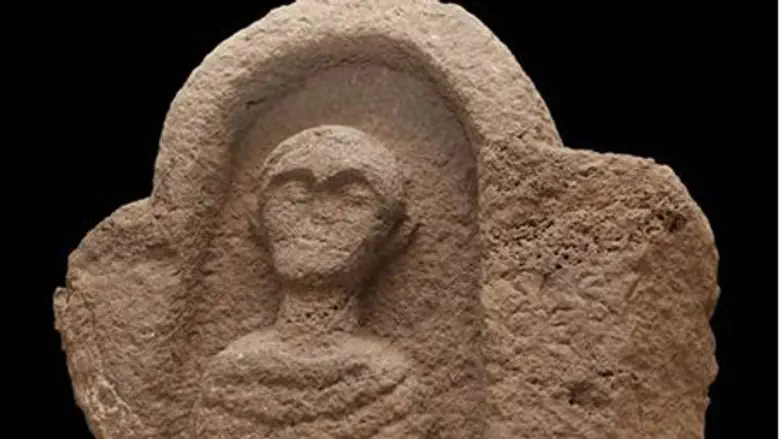
The 13th year of Haifa University's archeological digs at the Susita site just east of the Sea of Galilee (Kinneret) has yielded several surprises, including what experts believe is a portrait of a local man from the 3rd century CE, carved into a basalt gravestone.
Susita – as it is known in the Aramaic version – was originally known by the Latin name Hippos. Both names refer to horses, although the reason for this name is not known. It was destroyed by the earthquake of 749 CE.
Archeologist Dr. Michael Eisenberg explained that the "Susita man" rock was found in the course of a pre-season dig, at the site of a small fortress guarding the main entrance to the road that led up to Susita. Eisenberg is certain that the carved rock was removed from its original location at a cemetery, where it had served as a gravestone, and used to build the fortress.
"This is a simple work of art by a folk artist that fits the late Roman period, around the 3rd century CE," he estimated. "The portrait of the first Susita resident in our hands and we hope to be able to decipher his name soon, too," he added, referring to the Greek letters that were engraved next to the portrait.
Archeologists also found what they say was the town's garbage dump, which they say will offer them a glimpse into the residents' day-to-day lives, and especially their diet. "Garbage can't be fooled," said Eisenberg.
Susita was one of the towns known as the Decapolis, whose residents saw themselves as culturally Greek, as opposed to the surrounding communities, whose inhabitants were Jewish, Phoenician and Nabatean.